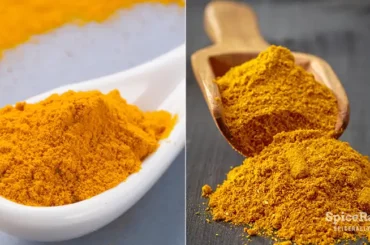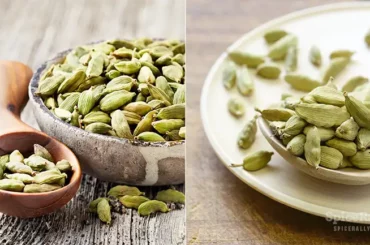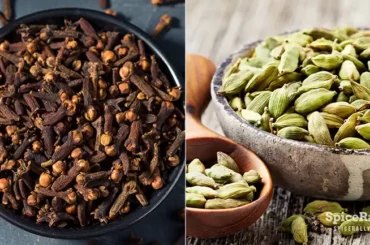Mighty little cloves are a crop worth having in your backyard for many reasons. While you can use it for consumption, you could also make a ton of money. So, here’s a guide on how to grow cloves at home.
The clove is an evergreen tree that is native to the Moluccas Islands of Indonesia, and a mature tree could live up to a hundred years and beyond. This plant thrives in humid tropical or subtropical climates and requires loamy, luscious soil. Cloves most often grow from seeds, and you can grow them as an indoor plant or in a greenhouse if you can maintain the humidity high enough.
This article shares the proper techniques and things you should follow to have successful clove cultivation at home. Keep scrolling!
How To Grow Cloves At Home?
Zestful cloves are commonly used as a culinary spice around different cuisines in the world and are known for their immaculate health and medicinal benefits. This spice is comparatively a bit expensive in the spice market since they count for some labor-intensive work and a longer harvesting time. Therefore, you will really feel the worth of having at least one clove tree in your own home garden.
A healthy clove tree usually produces approximately 75 pounds of clove buds per year, and the tree itself can live up to 100 years and beyond. So, cultivating cloves can be a lifelong investment to fulfill the culinary spice requirement and make some extra cash if you want.
As mentioned before, the clove tree survives in tropical and subtropical climates, so you can cultivate it successfully if you live in the USA hardiness zones 11-12. You can also grow cloves as an indoor plant or in a greenhouse as long as you maintain a stable humidity level.

Plant Description
The clove tree is usually conical when young and gets almost cylindrical when maturing. This evergreen tree could reach up to 25 to 40 feet in height. The trunk is about 30 cm in diameter and is formed of very hard wood. It often divides around the base into two or three main vertical branches, a pattern sometimes affected by planting two or three seedlings beside one another.
The clove tree’s leathery, glossy, and aromatic leaves are arranged alternately, glabrous, and exstipulate in shape. They are slender and about 2-3 cm long. Relatively puffy and pinkish at the underside and with the leaf blade partially decurrent upon it in the upper part. Its flowers are arranged in inflorescences-like clusters at the tip of young branches.
The flower buds initially have a pale shade, turn green over time, then turn to a brilliant red when ready for harvest. Cloves are harvested at 1.5–2 cm long and consist of a calyx that ceases in four spreading sepals and four sealed petals. The fruits, which resemble small, long deep red berries, sprout from the flowers.
What Is The Ideal Outdoor Location To Grow A Clove Plant?
For a clove tree to grow and bloom, it must be in a climate that will not reach a temperature below 59 °F and is most frequently roughly 70 to 85 °F. Clove plants also need high humidity, approximately 60-70%. In fact, chances are high that your clove plant might succeed outdoors if you live somewhere humid and hot.
In addition, clove plants grow best in places that get 50 to 70 inches of annual rainfall. And it is important to bear in mind that it will take a minimum of seven years for your clove tree to fully mature, even in an ideal environment.
Even though clove plants thrive in hot climates, excessive amounts of sunlight can be a disadvantageous condition. Therefore, locating the plants where they will get around 3 hours of daily sunlight is essential. Moreover, strong winds can also damage your clove plants, specifically when they are immature, so a sheltered spot works best.
Planting Clove Indoors
Clove trees can also be grown indoors, but they must be kept in invariably humid and hot states. Maintain the temperature at about 70 to 85 °F and the humidity roughly a minimum of 60-70%. A greenhouse is an excellent indoor spot for a clove plant, as it can be controlled in a hot and humid climate year-round.
Starting With Planting A Clove Seedling
Soil
Clove plants must be cultivated in well-draining soil. Tropical, loamy, and rich soil makes these plants the most suitable growing requirements. You can test soils that are hefty in organic matter, such as compost and peat moss. Look for soil incorporated with clay, sand, and mud so that it drains well.
Preparation
You should first decide whether you are growing cloves using seeds or from a young plant you buy from the nursery. However, we suggest using seeds as we cannot guarantee the success of the plants we buy from the nurseries.
You can extract the seeds from a mother plant and soak them for at least 24 hours before planting. Do not use dried seeds. Because once the seeds dry out, they are no longer usable and will not thrive at all.
After getting prepared with the seeds and soil, you can use seedling trays to plant them. Put the soil into the blocks of the tray and place each seed on top of the soil. You don’t need to plunge them in; just place the seed on top.
Locate a partly-shaded spot for your seedling, where your clove plant will acquire about 3-6 hours of sunlight daily. Maintain the moisture of the soil, but not waterlogged. It might use up to six weeks for a seed to sprout. Lower your watering line up to every other day if you detect that the soil is still moist after 24 hours.
Transferring The Seedling Into A Bigger Pot
Once your plant reaches about 9 inches in height, you can transplant it to a bigger pot. It is important to remember not to push the seedling before it is tall enough. Clove plants are very fragile and might not persist if you transplant them too early. Let the seedling soil dry out for 24 hours to make it more manageable to move the plant.
The seed might need to develop for up to six months before it can be transplanted. Use soil in equal parts: loam, clay/ sand, and organic matter. Fill the container up to 1 inch of the edge with soil. Make a hollow large enough to hold the seedling’s roots. Slightly moistening the soil can make it more effortless to make a hollow for the seedling to fit in.
Relax the soil near the seedling using a fork and carefully drag it out of the soil by the leaves. Be wary since the stem will be very fragile, so pull it as smoothly as possible. Position the seedling in the new container.
Water the soil until it is moist, but do not make the soil saturated. Stay until the soil dries out to water your seedling again. Overwatering your seedling can destroy it, and you may need to add more soil to hold the seedling in place.
Moving The Plant Outside
Clove seedlings grow slowly, but it’s critical to ensure the seedling is healthy enough to endure outdoors before transplanting it. Once the seedling reaches 18-24 months, it should be firm enough to transplant. Clove trees can take about 5-7 years to develop enough to bloom.
Caring For Your Clove Tree
Watering
Water your clove tree weekly, mainly in the initial 3-4 years. Immature clove trees specifically need a lot of water to thrive. If you don’t live in a rainy area or are growing your clove tree indoors, water it each time the soil parches out, at least once a day.
Retain the dampness of the soil, but do not soak. To bypass overwatering, place your tree in well-draining soil. In short, a clove tree should get about 1 to 1.5 inches of a weekly water supply.
Using Fertilizer
If you live in a place where you get abundant rain, fertilize your clove tree at the beginning of the season. You can use bone meal, compost, or fish meal to fertilize your tree. But if you don’t get somewhere without plenty of rain or have your clove tree inside, you’ll need to fertilize it every six months.
Looking Out For Diseases And Pest Infections
It is very important to prune any branches that perish or become diseased to maintain the plant’s health. If Oriental fruit flies strike your tree’s flowers, try encasing the flowers with plastic bags to stop the flies from getting to the plant. Do not use any sprays or insecticides unless you can make sure they are unassailable for your clove trees.
Harvesting
A well-cared, healthy clove tree will produce flowers after about 5-7 years. The flowers will be white at first and then transition to pink after about six months. Once these flowers start turning pink, they can be harvested. They are usually hand-picked and are sun-dried for up to five days before packaging or use.
Summing Up
The clove tree is an evergreen plant that thrives best in tropical and subtropical temperatures. This plant requires a hot and humid climate, and you can grow it indoors or in a greenhouse as long as you can maintain the temperature. The soil condition, watering, and fertilizing are important to get a healthy clove tree. And you should patiently give time to your tree, as it takes about 5-7 years for a clove tree to yield.




